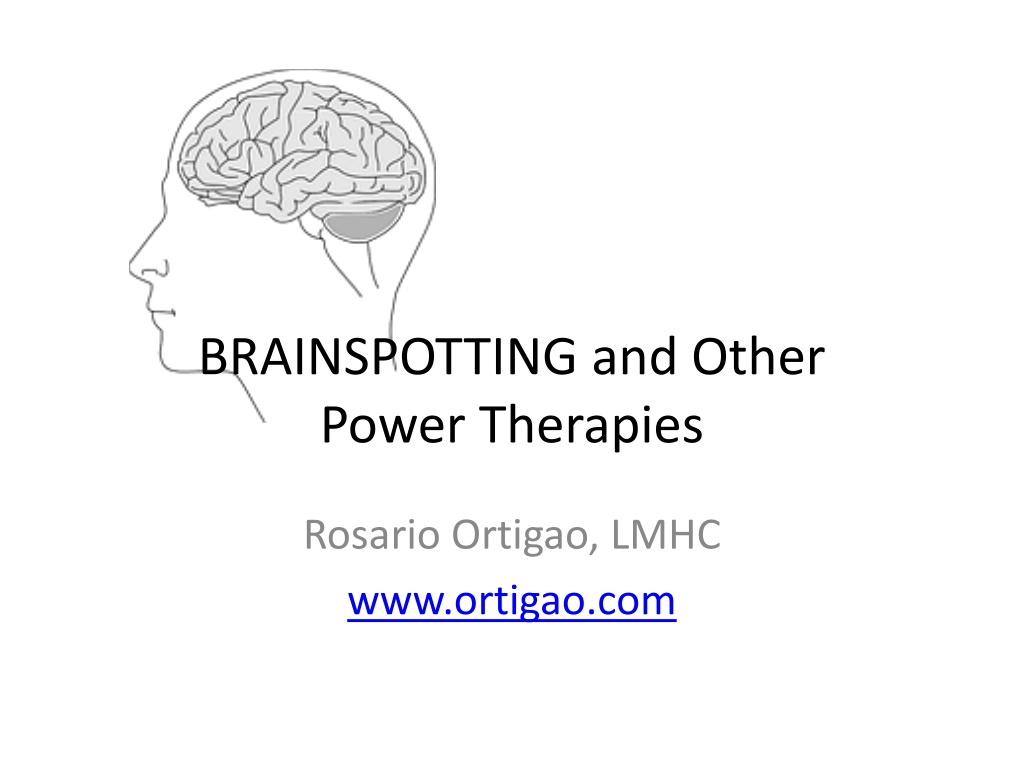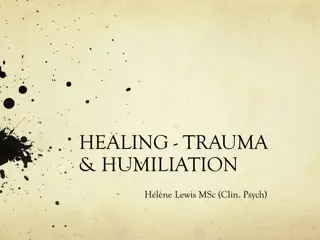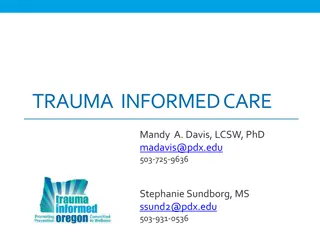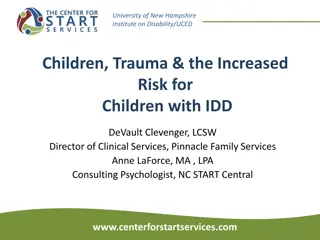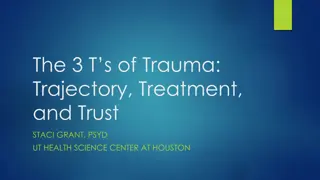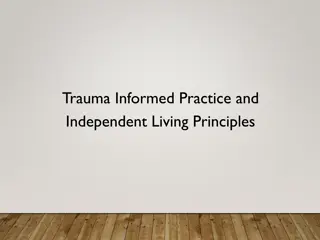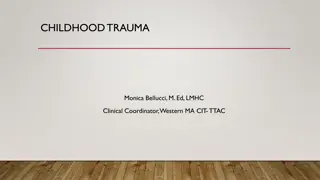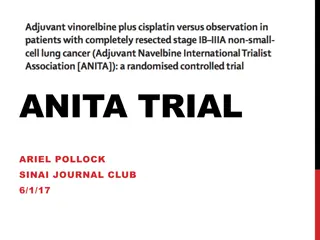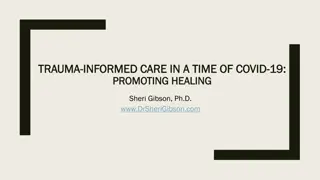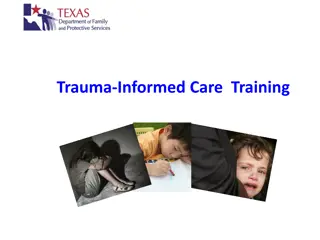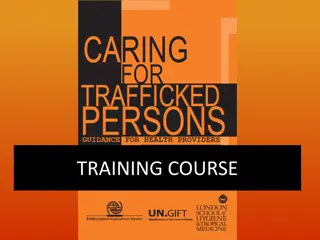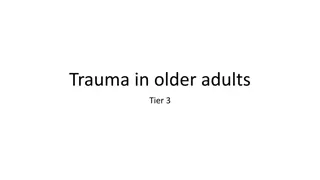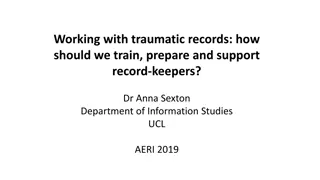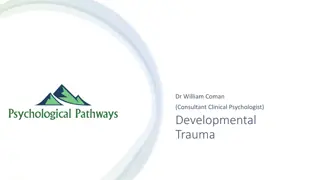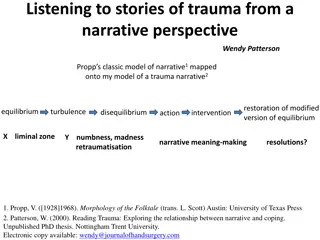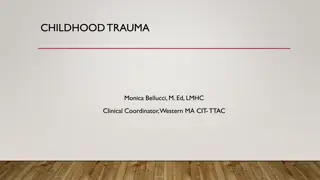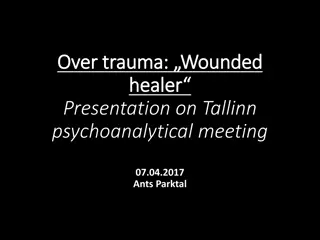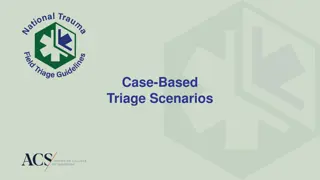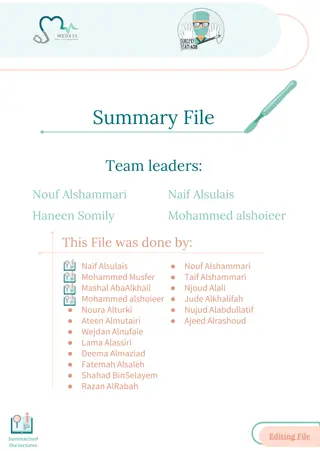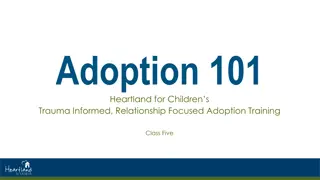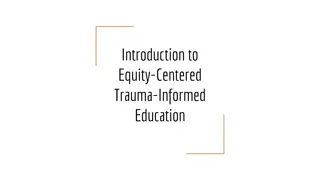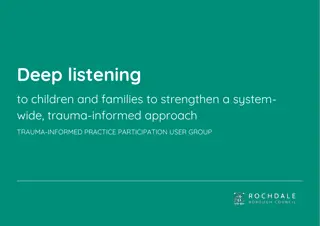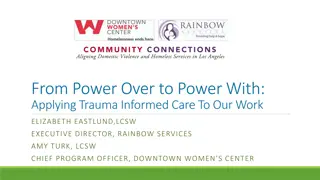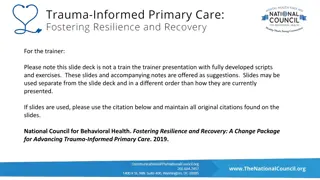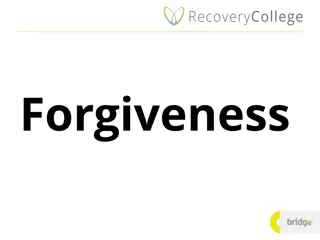Understanding Brainspotting and Power Therapies for Trauma Healing
Participants in this workshop will explore Brainspotting (BSP) and other Power Therapies, learning about trauma, its effects, and the power of therapies such as EMDR, TFT/EFT, HAKOMI, PBSP, and more in addressing trauma and promoting healing through heightened bodily awareness and somatic memory retrieval. Discover how these therapies can help individuals overcome overwhelming experiences and lead to hope-filled expectations for the future.
Download Presentation

Please find below an Image/Link to download the presentation.
The content on the website is provided AS IS for your information and personal use only. It may not be sold, licensed, or shared on other websites without obtaining consent from the author. Download presentation by click this link. If you encounter any issues during the download, it is possible that the publisher has removed the file from their server.
E N D
Presentation Transcript
BRAINSPOTTING and Other Power Therapies Rosario Ortigao, LMHC www.ortigao.com
Objectives Participants will: Learn the definition, some of the processes and neurophysiological nature of Brainspotting (BSP) and other Power Therapies Learn to notice one s eye positions and inherent healing Learn about the power of bilateral music and Therapist-Client's attunement
Trauma A life event which causes significant physical and/or emotional injury and distress, in which the person powerfully experiences being overwhelmed, helpless, or trapped. The medical and psychological literature now acknowledges that approximately 75% of requests for medical care are linked to the actions or consequences of this accumulation of stress and/or trauma upon the systems of the human body, which is where trauma is held.
POWER THERAPIES EMDR, TFT/EFT, HAKOMI, PBSP, SE, BSP Power Therapies often prove effective with astonishing rapidity especially when compared to the far slower-paced, traditional talking methods of treatment ( ) They rely heavily upon what the body knows, or somatic memory ( ) They focus on retrieving and integrating scattered bits of data stored within the patient s physical as well as mental being.
POWER THERAPIES Seek(ing) to promote a state of heightened bodily awareness by actively summoning up a person s feelings, emotions, and sensations for instance, what was felt, seen, touched, smelled, and heard during certain critical events or time periods ( ) The body s memory is thus put into play as a way of gaining access to regions deep within the old emotional brain where hugely over sensitized networks of reacting have been established.
POWER THERAPIES (Pesso video/time permitting) PBSP s ultimate goal is to introduce into the patient s internal being a taste of what it would be like to have had a different, more benign past and thus to engender more hope-filled expectations about the future expectations that are rooted in the body and yet not grounded in the negativity and pain of the past. Maggie Scarf
Who is David Grand? LCSW, with a PhD from International University, Clinical director of the Faithful Response program which treats 9/11 survivors and returning vets from Iraq and Afghanistan. Former chairman of the EMDR-Humanitarian Assistance Program (HAP) and organized many pro bono trauma therapy trainings in places most in need such as in Northern Ireland, Israel, and in the inner cities of the United States. Treated thousands of survivors of the World Trade Center Attack and Hurricane Katrina. Maintains a private psychotherapy and performance enhancement practice in Manhattan and Long Island, New York. Taught the first course on Brainspotting at The Omega Institute in Rhinebeck, New York, in 2009.
Definitions Brainspotting uses the neuroscience finding that where you look affects how you feel. Clients are helped to find a spot that increases the felt sense of an experience (or a spot that reduces over-arousal) and to process those sensations with a dual focus on the spot and body sensations. After arousing/processing sensations tied to an event a few times, clients discover new ways to view them https://www.youtube.com/watch?v=BwR1fcMjw10 https://www.youtube.com/watch?v=9O5rivl3RuM
Brainspot "Brainspot" is the eye position which is related to the energetic/emotional activation of a traumatic/emotionally charged issue within the brain, most likely in the amygdala, the hippocampus, or the orbitofrontal cortex of the limbic system. Located by eye position, paired with externally observed and internally experienced reflexive responses, a Brainspot is actually a physiological subsystem holding emotional experience in memory form
Pie Frey BSPs Definition BSP is a powerful, brain-based, treatment modality that bridges the gap between mind and body. Focusing on identifying the physical correlates of a client's issues, it provides an anchor that grounds the patient while simultaneously stimulating an incredible associative process. This leads to the processing and release of the core neurophysiological sources of emotional/body pain, trauma, dissociation, performance anxiety and an array of other challenging symptoms. Pie Frey, Psy. D.
Attunement Brainspotting functions as a neurobiological tool to support the clinical healing relationship. "Brainspotting is based on the profound attunement of the therapist with the patient, finding a somatic cue and extinguishing it by down-regulating the amygdala. It isn't just PNS (Parasympathetic Nervous System) activation that is facilitated, it is homeostasis." - Robert Scaer, MD, "The Trauma Spectrum"
Not Talk Therapy Brainspotting gives us a tool, within this clinical relationship, to neurobiologically locate, focus, process, and release experiences and symptoms that are typically out of reach of the conscious mind and its cognitive and language capacity. Brainspotting works with the deep brain and the body through its direct access to the autonomic and limbic systems within the body's central nervous system.
How it Works The maintenance of that eye position/BSP within the attentional focus on the body's "felt sense" of that issue or trauma stimulates a deep integrating and healing process within the brain. This processing, which appears to take place at a reflexive or cellular level within the nervous system, brings about a de- conditioning of previously conditioned, maladaptive emotional and physiological responses.
Brainspot Indicators When a Brainspot is stimulated, the deep brain reflexively signals the therapist that an area of significance has been located. This typically happens out of the client's conscious awareness. There are a multitude of reflexive responses, including eye twitches, wobbles, freezes, blinks (hard and double blinks) pupil dilation and constriction, narrowing, facial tics, brow furrowing, sniffs, swallows, yawns, coughs, head nods, hand signals, foot movement and body shifting. Reflexive facial expressions are powerful indicators of Brainspots.
BioLateral Sound Recordings http://www.biolateral.com/catalog/biolateral-cds BioLateral Sound Recordings (or BioLateral for short) are CDs and tapes which can be used as an alternative to eye movements as a source of bilateral stimulation. BioLateral is effective both for treatment and relaxation. Used between sessions, it may help control anxiety and insomnia.
BSP TRAININGS http://www.brainspottinginternational.org/cal endar/ https://brainspotting.pro/trainings http://www.thetraumatherapistproject.com/p odcast/david-grand-phd/
Bibliography https://brainspotting.pro/ http://www.brainspottinginternational.org/calendar/ Dr. Frie s materials for level I and II trainings Grand, David, Brainspotting, The Revolutionary New Therapy For Rapid and Effective Change. Sounds True. Boulder, CO. 2013 EMDR And Beyond: The Trauma Power Therapies. Video with Drs. Bessel van der Kolk, Peter Levine, Stephen Porges and others. Amazon. 2012 Maggie Scarf, Secrets, Lies, Betrayals, How The Body Holds The Secrets of a Life, and How To Unlock Them. Ballantine Books. Louisville. CO. 2005
Rosario Ortigaos Bio Rosario Ortigao is a LMHC. She graduated with a Masters degree from Rollins College, in 1987, in Mental Health Counseling. She is a certified EMDR therapist and utilizes other power therapies such as Brainspotting (BSP), PBSP, EFT and hypnosis. Her BSP training was in 2013-15. Rosario compares it to an art form that opens the doors to neurogenesis Rosario was born and raised in Portugal, where she earned a degree in Germanic Philology from the University of Lisbon. Rosario has worked and studied in London and Israel and moved to the United States in 1981. She is fluent in Portuguese, English, Spanish and French; has studied Italian, German and Hebrew; and is currently learning ASL. She is passionate about physical, mental and spiritual health and invites you to join her in her weekly qigong and tai-chi practices.
